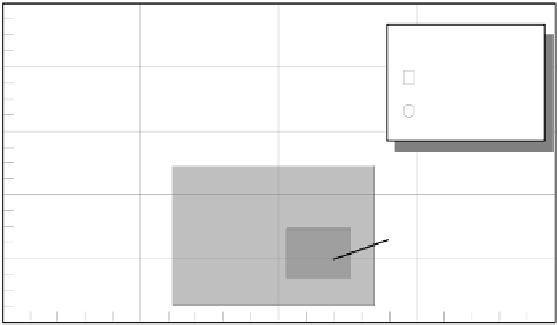Environmental Engineering Reference
In-Depth Information
Regular sampling can be too expensive in large areas or in sites where the
contamination is poorly defined. The results of Figure 12.8 taken from [BEN 93]
show that the number of sampling points increases when:
− the probability of detecting the target contaminated zone
Zc
increases for a
given ratio
Zc/S
(
S
being the total surface);
− the
Zc/S
ratio decreases for a given probability of detection.
The results of Figure 12.8 also indicate that the number of samples that are
necessary to obtain a high level of precision (higher than 90%, for instance) for
small targets or large surfaces (
Zc/S
= 0.001) is quite high (>1,000). In this regard,
the higher level of precision required and the large number of samples necessary
explain the high costs of contaminated site investigations compared to standard
geotechnical
in situ
investigations.
100
Zc / S=0.1
Zc / S=0.01
Zc / S=0.001
80
60
Area sites
40
Zc
20
0
0
500
1000
1500
2000
Number of sample points
Figure 12.8.
Sampling conditions [BEN 93]
Table 12.2 [SHA 99] provides evidence about the number of boreholes executed
in recent years depending on the type of structure constructed and the related risk to
human life and the environment.




